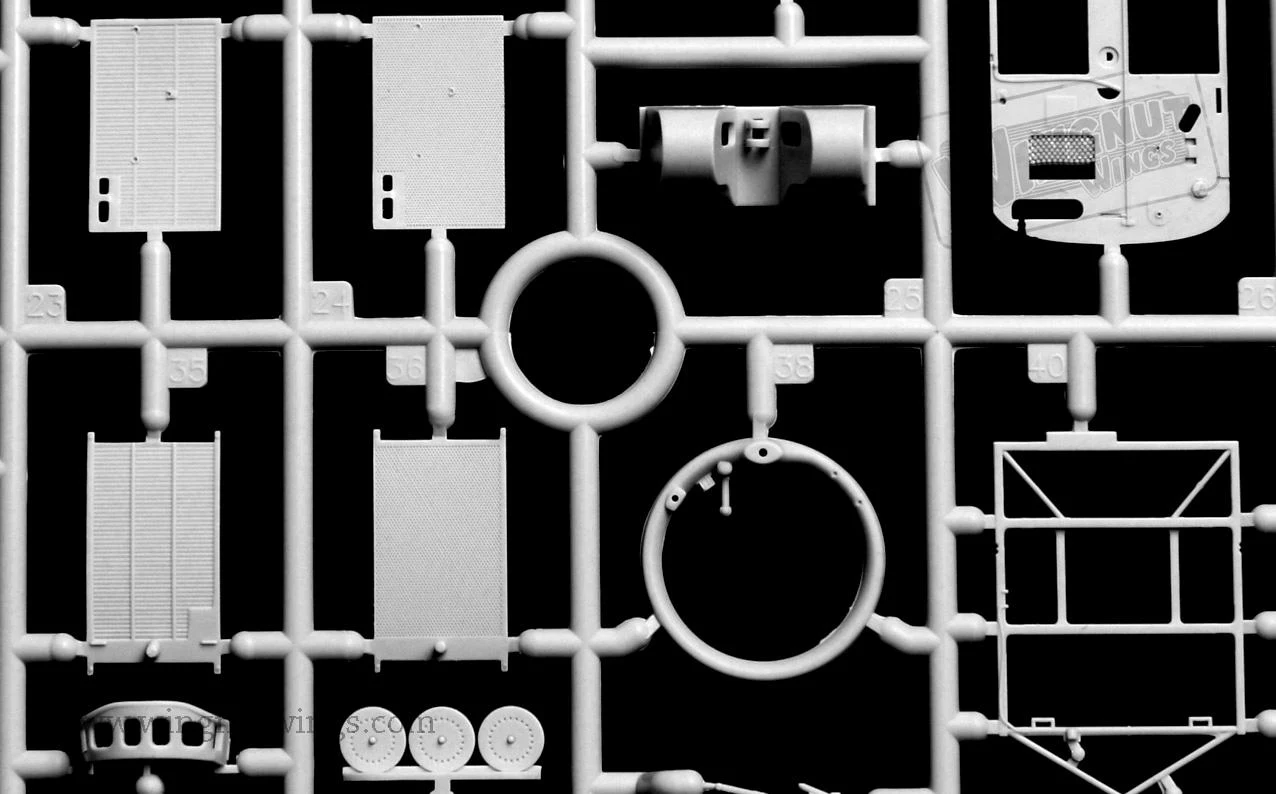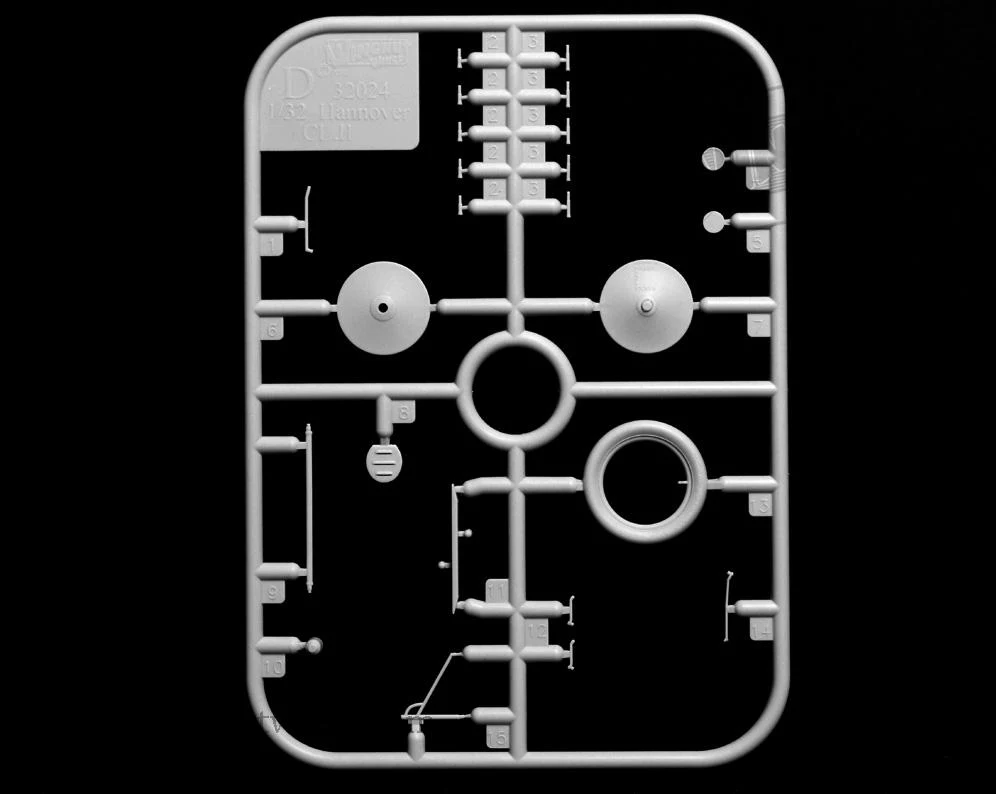It has been several years since the first release of the 32nd scale Hannover Cl.II from Wingnut Wings. Now, we have the official pictures and information on the new release in this series, the early version of this aircraft, in our preview...
The highly distinctive Hannover Cl.II was an excellent low-level two-seat escort fighter and ground attack aircraft. Hannoversch Waggonfabrik AG (Hawa) manufactured railway carriages before branching out and building aircraft under license for Aviatik, Rumpler and Halberstadt. Hawa delivered their first license-built aircraft in early 1916 but by the end of that year, they had begun to design their own aircraft to Idflieg’s new lightweight C class (C = armed two-seat) specifications. The result was the Hannover Cl.II (the ‘l’ stands for leicht - lightweight) prototype which first flew in July 1917 with production aircraft reaching front line units the following month. Powered by a 180hp Argus As.III engine, the new ‘battle plane’ was well received; it was strong, fast, lightweight and in certain circumstances could outmanoeuvre allied fighters.
The high position of the crew gave them an excellent field of vision unobstructed by the top wing, and the innovative biplane tailplane increased the observer’s field of fire rearwards. Depending on mission requirements the Hannover Cl.II could carry various models of camera and wireless equipment as well as small bombs.
The unusually deep Hannover Cl.II wooden frame fuselage was skinned with 1.6mm plywood (thinner than the fuselage wall thickness of this model) and then given a layer of doped on fabric for additional strength. But the most distinctive feature of the Cl.II was the biplane horizontal tailplanes. The wing panels were of conventional construction is made of wood and covered in fabric while the elevators, ailerons and top horizontal tailplane were constructed from welded steel tubing covered in fabric. The top wing centre section and the bottom horizontal tailplane were constructed from wood like the wings but were skinned with 1.6mm plywood. The wing and undercarriage struts were steel tubes with wooden fairings wrapped in fabric.
A lightened and strengthened version powered by the coveted 180hp Daimler-Mercedes D.IIIa engine, the Hannover Cl.III, was put into production in January 1917. A mere 80 aircraft had been manufactured before production was switched back to the Argus As.III engine later that month because the Daimler-Mercedes D.IIIa power plant was urgently required. These lightened aircraft powered by the Argus As.III became the Hannover Cl.IIIa. Although the Hannover Cl.III and Cl.IIIa featured a shorter wingspan and narrower fuselage, along with several small external differences, they looked for all intents and purposes exactly the same as the Cl.II, making identification very difficult for the uninitiated. Although the Cl.II was gradually replaced by the improved Cl.III & Cl.IIIa from the middle of 1918 they continued to serve at the front until the armistice.
Additionally, 200 Cl.II were manufactured by Roland during 1918 which primarily served with training units. A few Hannover Cl.II and Cl.IIIa continued to serve post-war in the Polish and Latvian air services. Any history here is of necessity very brief so for a better understanding of this important aircraft we encourage you to seek out the references mentioned below.
WW1 colour schemes are contentious at the best of times and we have done our best to provide what we consider to be accurate painting information for this model. The various camouflage schemes and personal markings applied to German aircraft of the Great War have attracted more than their fair share of debate over the years and, while we have been as meticulous as we could be, I’m sure some will not find our choices to their liking. Hannover Cl.II interior fuselage colours are thought to be dark varnished wood with metal brackets and fittings finished in grey-green. The fabric areas of the wings and tailplane were covered with 4 and 5 colour lozenge with rib tapes cut from the same material or plain linen.
The top wing centre section, wing struts, ply covered bottom horizontal tailplane and rear of the fuselage were painted to approximate the fabric lozenge shapes and colours using both matt and gloss paints. It appears that larger freehand lozenge patches were hand-painted or sprayed over the rest of the fuselage which were in turn frequently oversprayed with camouflage colours to tone them down considerably. Period reports and factory documents refer to Hannover fuselage colours of ‘black’, ‘blue’ and ‘generally dark green’. The use of a transparent dark ‘Prussian blue’ glaze sprayed over the lozenge patches on the fuselage would achieve any, and perhaps all, of these results depending on the intensity of the underlying colours and the opacity of the glaze. Additionally, many colourful unit and personal markings were applied, all of which remain amongst the liveliest of topics for modellers to debate.
Hannover Cl.II
DR Military Deutsche Luftstreitkräfte (Imperial German Air Force 1916-1920)
FA (A) 282 9280/17 (Grönhagen? & J Gfrör) 1917

Royal Bavarian Schusta 24b 9398/17 (JKH Müller & A Zitzelsberger) 1918

Royal Bavarian Schusta 27b 9276/17 (H Bronner) |1917

Royal Prussian Schusta 12 9301/17 (J Missfelder) 1918

Hannover Cl.II (Rol)
DR Military Deutsche Luftstreitkräfte (Imperial German Air Force 1916-1920)
Bayerische-Fliegerschule 5 622/18 in 1918
Decals are supplied by Cartograf:
A new (Early version) Hannover Cl.II from Wingnut Wings in late September
New Item Preview: Hannover Cl.II (Early)
From Wingnut Wings
1/32nd scale
Kit No #32079
ETA September 2019
Price: US$129
This will be the second release int he Hannover Cl.II family. Wingnut Wings has already released the latter service version in 2012, you can say it has been a long wait for Hannover fans to get another kit in this family of aircraft. This kite is popular with Wingnut fans so it was only a matter of time to see another kit come out.
The previous WNW Hannover Cl.II kit hails back from 2012
But for those of you unfamiliar with this aircraft Wingnut Wings has provided some history, pictures of the real thing and sprue pictures of the soon to be released kit we thought we might show you in our preview...
History of the Hannover Cl.II
The high position of the crew gave them an excellent field of vision unobstructed by the top wing, and the innovative biplane tailplane increased the observer’s field of fire rearwards. Depending on mission requirements the Hannover Cl.II could carry various models of camera and wireless equipment as well as small bombs.
The unusually deep Hannover Cl.II wooden frame fuselage was skinned with 1.6mm plywood (thinner than the fuselage wall thickness of this model) and then given a layer of doped on fabric for additional strength. But the most distinctive feature of the Cl.II was the biplane horizontal tailplanes. The wing panels were of conventional construction is made of wood and covered in fabric while the elevators, ailerons and top horizontal tailplane were constructed from welded steel tubing covered in fabric. The top wing centre section and the bottom horizontal tailplane were constructed from wood like the wings but were skinned with 1.6mm plywood. The wing and undercarriage struts were steel tubes with wooden fairings wrapped in fabric.
A lightened and strengthened version powered by the coveted 180hp Daimler-Mercedes D.IIIa engine, the Hannover Cl.III, was put into production in January 1917. A mere 80 aircraft had been manufactured before production was switched back to the Argus As.III engine later that month because the Daimler-Mercedes D.IIIa power plant was urgently required. These lightened aircraft powered by the Argus As.III became the Hannover Cl.IIIa. Although the Hannover Cl.III and Cl.IIIa featured a shorter wingspan and narrower fuselage, along with several small external differences, they looked for all intents and purposes exactly the same as the Cl.II, making identification very difficult for the uninitiated. Although the Cl.II was gradually replaced by the improved Cl.III & Cl.IIIa from the middle of 1918 they continued to serve at the front until the armistice.
Additionally, 200 Cl.II were manufactured by Roland during 1918 which primarily served with training units. A few Hannover Cl.II and Cl.IIIa continued to serve post-war in the Polish and Latvian air services. Any history here is of necessity very brief so for a better understanding of this important aircraft we encourage you to seek out the references mentioned below.
WW1 colour schemes are contentious at the best of times and we have done our best to provide what we consider to be accurate painting information for this model. The various camouflage schemes and personal markings applied to German aircraft of the Great War have attracted more than their fair share of debate over the years and, while we have been as meticulous as we could be, I’m sure some will not find our choices to their liking. Hannover Cl.II interior fuselage colours are thought to be dark varnished wood with metal brackets and fittings finished in grey-green. The fabric areas of the wings and tailplane were covered with 4 and 5 colour lozenge with rib tapes cut from the same material or plain linen.
The top wing centre section, wing struts, ply covered bottom horizontal tailplane and rear of the fuselage were painted to approximate the fabric lozenge shapes and colours using both matt and gloss paints. It appears that larger freehand lozenge patches were hand-painted or sprayed over the rest of the fuselage which were in turn frequently oversprayed with camouflage colours to tone them down considerably. Period reports and factory documents refer to Hannover fuselage colours of ‘black’, ‘blue’ and ‘generally dark green’. The use of a transparent dark ‘Prussian blue’ glaze sprayed over the lozenge patches on the fuselage would achieve any, and perhaps all, of these results depending on the intensity of the underlying colours and the opacity of the glaze. Additionally, many colourful unit and personal markings were applied, all of which remain amongst the liveliest of topics for modellers to debate.
This new kit from WNW Features:
-Dimensions: 37cm x 24cm
-Relatively simple rigging
-3 high-quality Cartograf decal sheets including fitted 4 & 5 colour lozenge and markings for 5 aircraft
-261 high-quality injection moulded plastic parts
-16 photo-etched metal detail parts
-Highly detailed 23 part Argus As.III engine with optional propellers
-Optional wireless, flares, radiators, cameras, teddy bear and diorama accessories
-Included one late production colour scheme for modellers uncomfortable with complicated lozenge camouflage finishes
-Fine in scale rib tape detail
-Full rigging diagrams.
Sprue Pictures:
Markings - (Profiles drawn by Ronny Bar)Hannover Cl.II
DR Military Deutsche Luftstreitkräfte (Imperial German Air Force 1916-1920)
FA (A) 282 9280/17 (Grönhagen? & J Gfrör) 1917

Royal Bavarian Schusta 24b 9398/17 (JKH Müller & A Zitzelsberger) 1918

Royal Bavarian Schusta 27b 9276/17 (H Bronner) |1917

Royal Prussian Schusta 12 9301/17 (J Missfelder) 1918

Hannover Cl.II (Rol)
DR Military Deutsche Luftstreitkräfte (Imperial German Air Force 1916-1920)
Bayerische-Fliegerschule 5 622/18 in 1918
Decals are supplied by Cartograf:
If you like what you see here you can order your own kit from Wingnut Wings directly or find more info on a distributor near you on the Wingnut Wings Website.









































